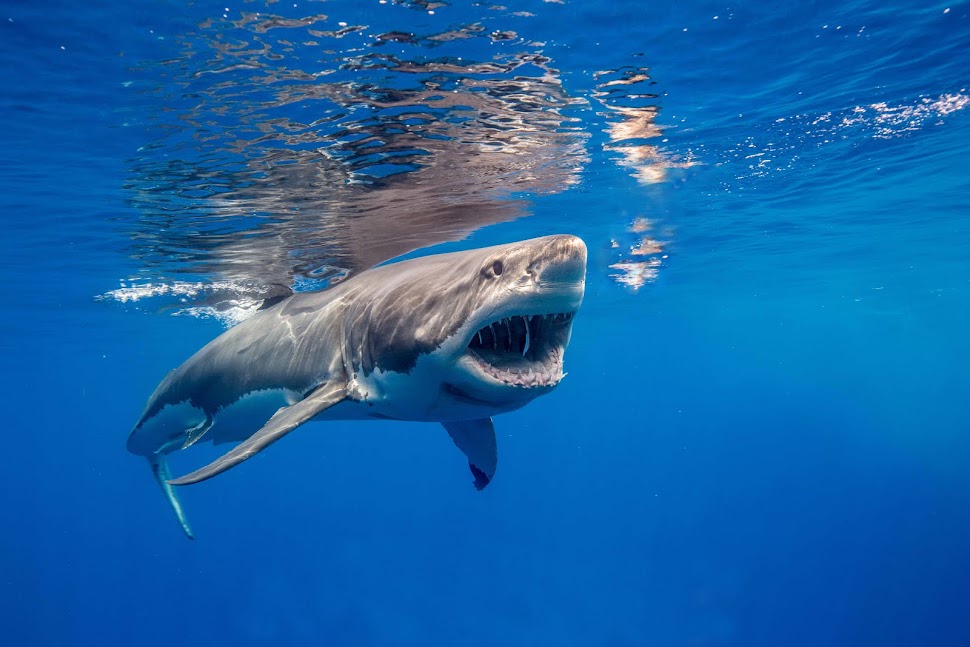"When you play with hungry sharks...you can pay the price"Recently we blogged about the "
Sin of Media", the promotion of negative shark media to main stream sources for personal gain. We have also blogged about the main stream medias bias as
primarily anti-shark.
There are very few
credible shark diving operators that do not understand this basic fact and yet this morning one of
the worst shark diving pieces to air on national television was seen by an estimated 4 million viewers, anti shark diving advocates,
the Bahamian Government, and others.
We are not content to sit by and entertain the thought that this operation did not know who The Today Show was, or had no media control over this piece. The number one rule with mainstream media is, if you are not sure,
do not do it.The Today Show, not surprisingly, introduced this piece with one of
the worst cage breaches to have ever been caught on tape, and then ended this piece with the
Markus Groh shark diving death. Once again framing an entire 200 million dollar global industry in an extreme and negative light.
The result this morning was an absolute black eye for the entire shark diving industry.
Extreme Shark DivingThe Extreme Shark Diving agenda hurts our industry.
It it indefensible. It skates on a thin veneer of legitimacy and
when inevitably it fails, and someone is bitten or killed by a shark, our industry and those in it who have moved past the experiment of Extreme Shark Diving are harmed. Not to mention the perception of sharks in general, thrown back to the stone age as little more than ravening killers.
As each piece of recent video seen on this mornings Today Show attests, these negative shark diving elements just serve to add to the argument against shark diving.
There's a theme here, and it is our
own industry members who are providing the basic framework for this theme. The time for this has ended.
If operators want to offer Extreme Shark Diving encounters
they are entitled to, as are the divers and photographers who are drawn to these encounters. What they are not entitled to do is take the rest of the industry down with them by propagating media that harms the industry regionally and internationally.
The BahamasIn 2006-7 the Bahamas Dive Association sent a Cease and Desist order to all operators at Tiger Beach and vessels that used this site - the details were specific.
The operators who come in from the USA are guests in the region, nothing more or less. It boggles the imagination,
that even after an operator shark death, US operations have not only failed to acknowledge the C and D but have ramped up extreme operations to a level that is
clearly not sustainable.
Worse yet they are promoting these activities on national television effectively thumbing their noses at the Bahamas Government and Tourism Bahamas whose lively hood depends on tourism and whose balance of dollars comes
not from US based shark diving operators but from a multi million dollar hotel industry.
Commercial shark diving operations are built on three foundations. Commercial encounters, regional conservation efforts, and regional politics. As a commercial shark diving operator you ignore regional politics at your own
peril.
Dangerous Shark Species Interaction Warning Letter 2006-7
To: All Dive Operations Conducting Questionable Dangerous Species Shark Interactions in the Waters of The Islands of The Bahamas
From: Bahamas Diving Association, Official Recognized Diving Association for 36 members of The Islands of The Bahamas
To Whom It May Concern;
We have become aware that some dive operators have chosen to disregard standard safe-diving practices as it relates to interactions with Tiger Sharks and other potentially dangerous species of Sharks, in various locations within the waters of The Islands of The Bahamas.
The Bahamas Diving Association endorses and suggests all dive operators in the legal waters of The Islands of The Bahamas follow GMAC guidelines for conducting potentially dangerous marine-life and human interactions.
In such, we recommend all operations immediately cease and desist conducting open-water non-cage Shark Diving experiences with known species of potentially dangerous Sharks, such as Tiger Sharks, Bull Sharks, Hammerhead Sharks, Lemon Sharks & Mako Sharks.
Species that we have determined safe to interact with outside of a cage are Caribbean Reef Sharks, Black Tip Sharks, Black-Nose Sharks, Nurse Sharks and Silky Sharks.
Many operators in the Bahamas conduct shark diving interactions with ‘safe’ species, and have done so for over 25 years without a major incident. However, due to the potential negative behavioral reactions of Tiger Sharks, Bull Sharks, Hammerhead Sharks, Lemon Sharks & Mako Sharks, purposeful feeding or interaction with these species without a proper shark cage is highly discouraged.
The Bahamas Dive Association (BDA) would be glad to help communicate industry-standard safe shark interaction practices, should you need any assistance with your procedures.
This letter will be copied to the Bahamas Government, plus all diving insurance and training agencies serving The Islands of The Bahamas.
Signed,
Mr. Neal Watson
President
Bahamas Diving Association
 From time to time we do online interviews with unique websites.
From time to time we do online interviews with unique websites.





























